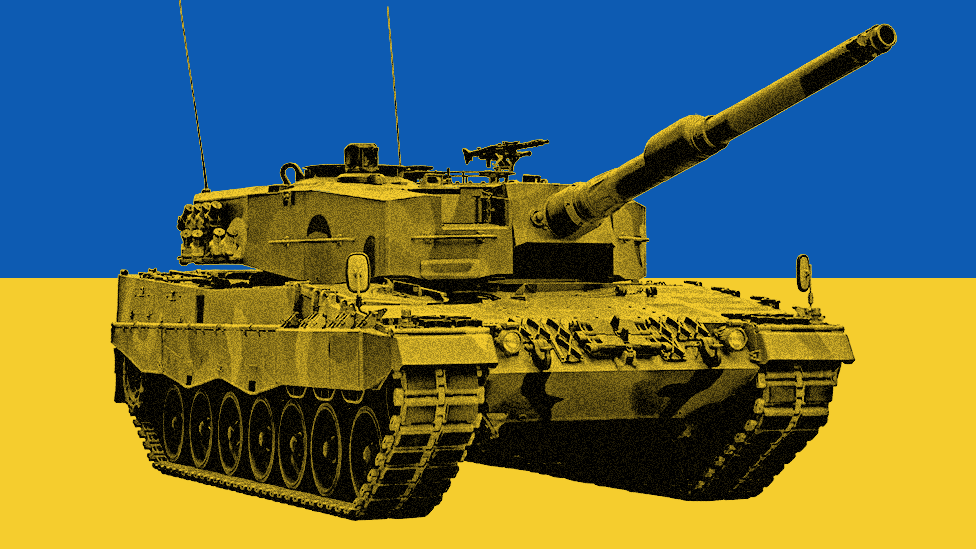Ukraine war: Bakhmut defenders plea for Western tanks
- Published
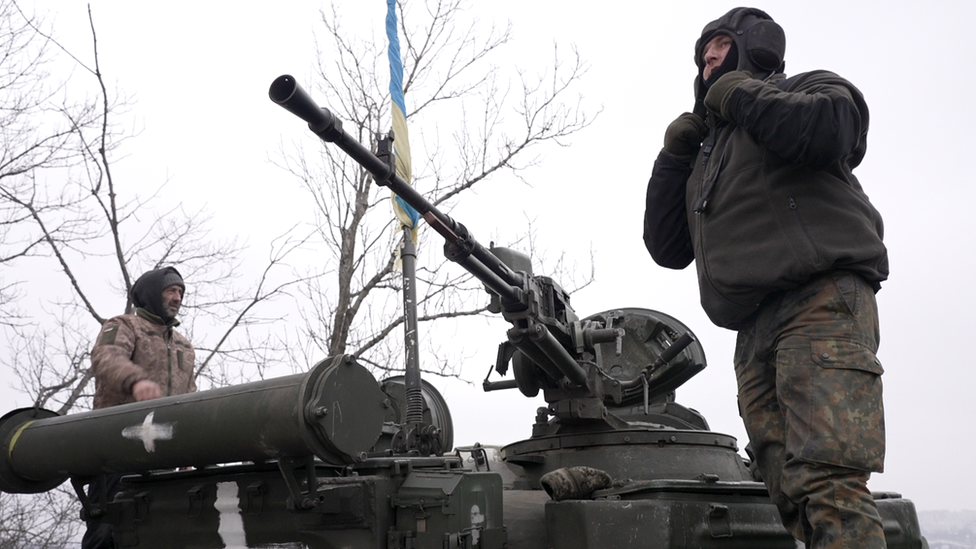
Ukraine is pleading for Western-made, modern tanks to fight off the Russians
As the UK and other European nations prepare to send tanks to Ukraine to help it liberate more territory from Russia, our correspondent Andrew Harding has been to visit members of a front-line Ukrainian tank unit already engaging Russian forces near the fiercely contested towns of Bakhmut and Soledar.
The explosions come every few seconds, sometimes in rapid clusters of six or more short blasts, sometimes deep and long and rib-cage-rattling, thundering across the snow-speckled hills that stretch along the front lines close to Bakhmut and Soledar.
Then come the distant booms, the shorter punch of a mortar round blasting off on the roadside, and, occasionally, the bone-chilling, fizzing whoosh of an incoming artillery shell that sends us diving for cover on the frozen fields.
This is the daily, constant, percussive chorus of war in the Donbas, where Ukrainian and Russian artillery, rocket and tank crews are slugging it out, trading blows in a fierce, but largely inconclusive struggle to break a months-long deadlock.
"We have a target," said Roman, a Ukrainian tank unit commander, suddenly pulling off his gloves, clambering up onto the slippery, snow-covered turret of a dark green T-72 tank, and swinging open a heavy steel hatch.

Vasyl, Volodymyr and Bogdan man a Soviet-era tank - and would all like an upgrade
Another crew member, Vlad, scrambled out of a nearby fox hole, where he had been warming his grimy hands over a fresh fire, to help out.
Seconds later, a skull-shaking explosion echoed across the valley and towards Bakhmut, as a US-supplied tank shell tore out of the gun barrel with a flash of orange, heading towards Russian positions on the opposite hillside.
"T-72s are old tanks - this one's the same age as me," said Bogdan, a 55-year-old Ukrainian volunteer, turning to pat the huge, squat, Soviet-era machine behind him. "I used to drive one of these nearly 40 years ago - I can't believe I'm doing it again. But it works. It does the job."
"But a Leopard would be better," said Volodymr, another member of their three-man crew, with a low chuckle.
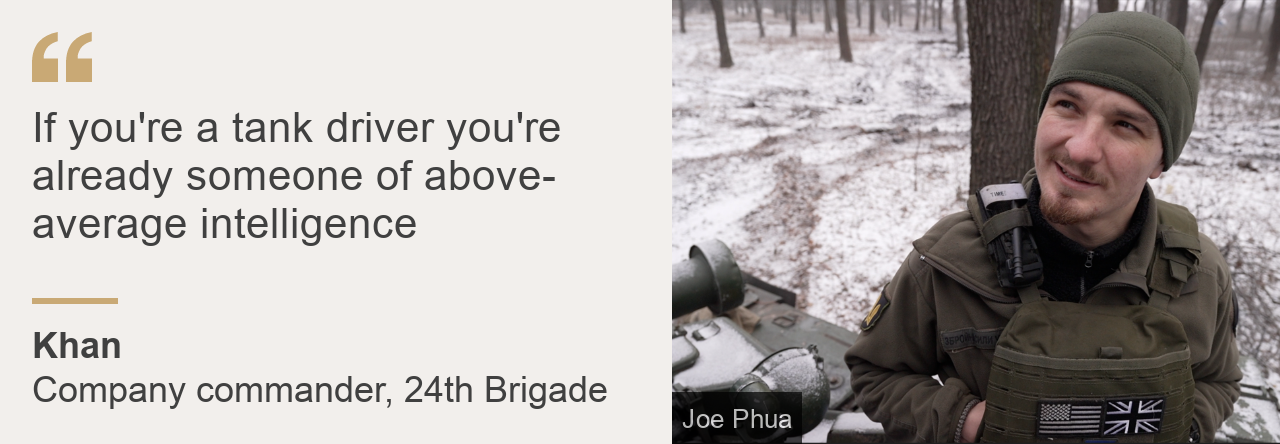
Plans to send German-made Leopard tanks and UK Challengers to the front lines here in the Donbas have been greeted with visible excitement by Ukrainian forces, who have been taking heavy casualties in recent weeks, around Bakhmut, and, more particularly, during the ferocious struggle for the nearby town of Soledar.
"There were very heavy losses. It's very pitiful. It's hard," said Danylo, an officer in charge of repairing tanks for the 24th Mechanised Brigade. He said the current deadlock would not be broken unless foreign tanks arrived in significant numbers.
"Yes, we'll be stuck here. We need these [Western tanks] to stop Russia's aggression. With infantry, covered by tanks, we'll win for sure," he said.
"Leopards, Challengers, Abrams - any foreign tank is good for us! I think we need at least 300. And we need them now!" said Bogdan.
The Ukrainians all acknowledged that Russia had more modern tanks but were scathing about their tactics.
"The Russian tanks are a bit better than ours. They're fully modernised. But mostly the Russians are strong because they push forwards en masse, advancing over the bodies of their own soldiers. Our commanders care more about the lives of their crews, so we try to destroy [the enemy] while losing as few of our own men as possible," said Bogdan.
A more senior company commander in the 24th Brigade, with the code name Khan, took us to a rear position, past fresh trenches being dug in the fields by specialised machines, where several tanks were hidden under camouflage nets in a wooded area.
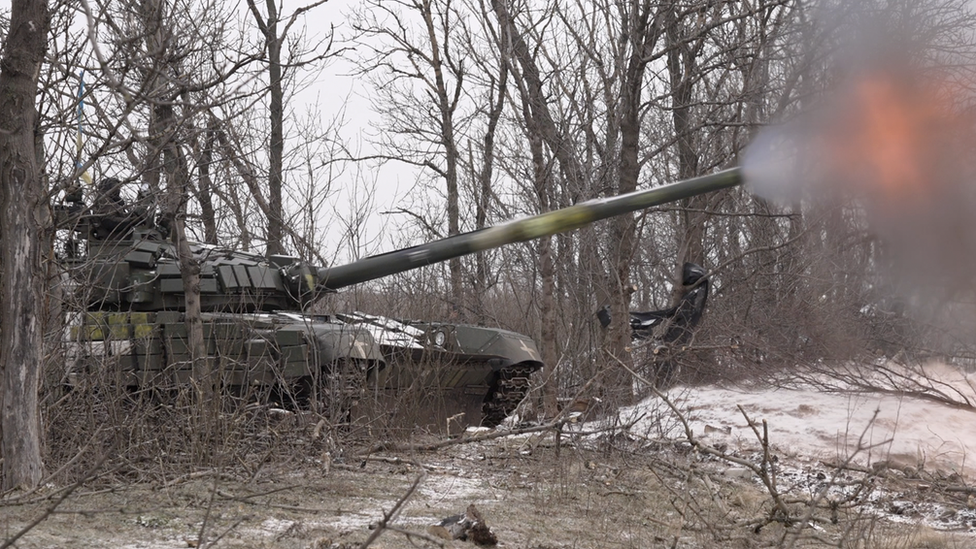
Russian and Ukrainian forces are deadlocked on the eastern front lines
"These T-72s have proved effective in winter conditions. But they're old, and not really suited for modern warfare. These days it's all about drones and the latest technology." Khan said he believed it would take very little time for his crews to adapt to more modern European equipment.
"If you're a tank driver you're already someone of above-average intelligence. They'll be able to learn and adapt quickly," he said.
Suddenly, an incoming Russian artillery shell landed several hundred metres away. Seconds later, another landed closer, and then closer still, sending soldiers and journalists diving for cover.
The war in Ukraine has, in many ways, been a distinctly old-fashioned conflict, based on attrition, on devastating artillery strikes, and on dug-in positions reminiscent of the trenches of World War One. But the war has also revealed the limitation of tanks - most clearly in the first weeks of the conflict when nimble Ukrainian infantry destroyed many huge Russian armoured columns with shoulder-launched rockets.
"In the old days, it was all about tanks. Now it's about these new rocket systems," said Volodymr. But the coming months could yet see Western tanks - if deployed quickly, and in large numbers - play a decisive role.


Related topics
- Published12 January 2023
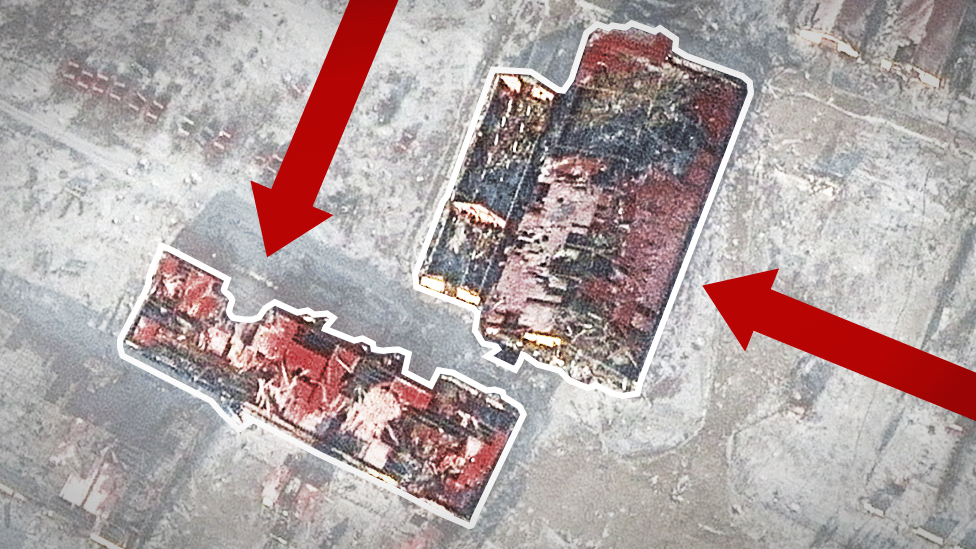
- Published4 January 2023
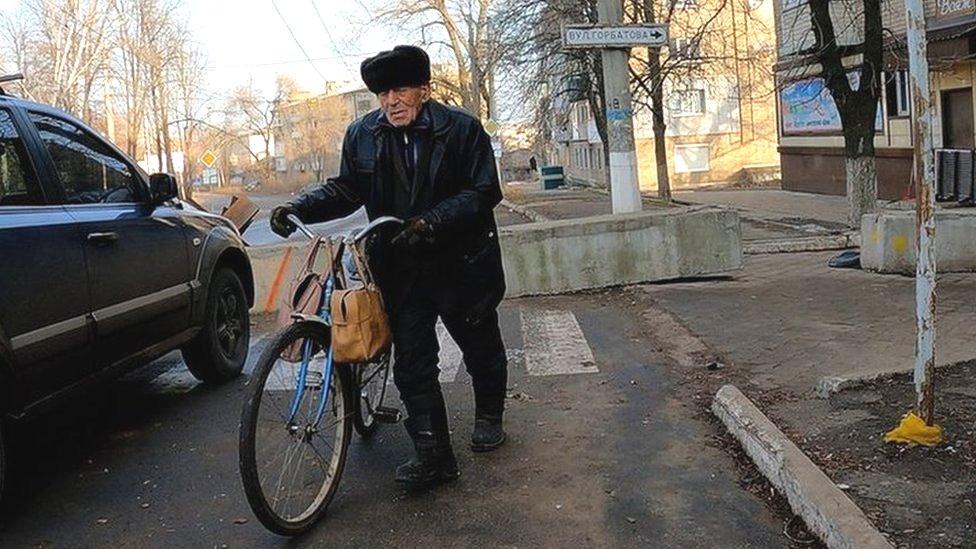
- Published17 February
